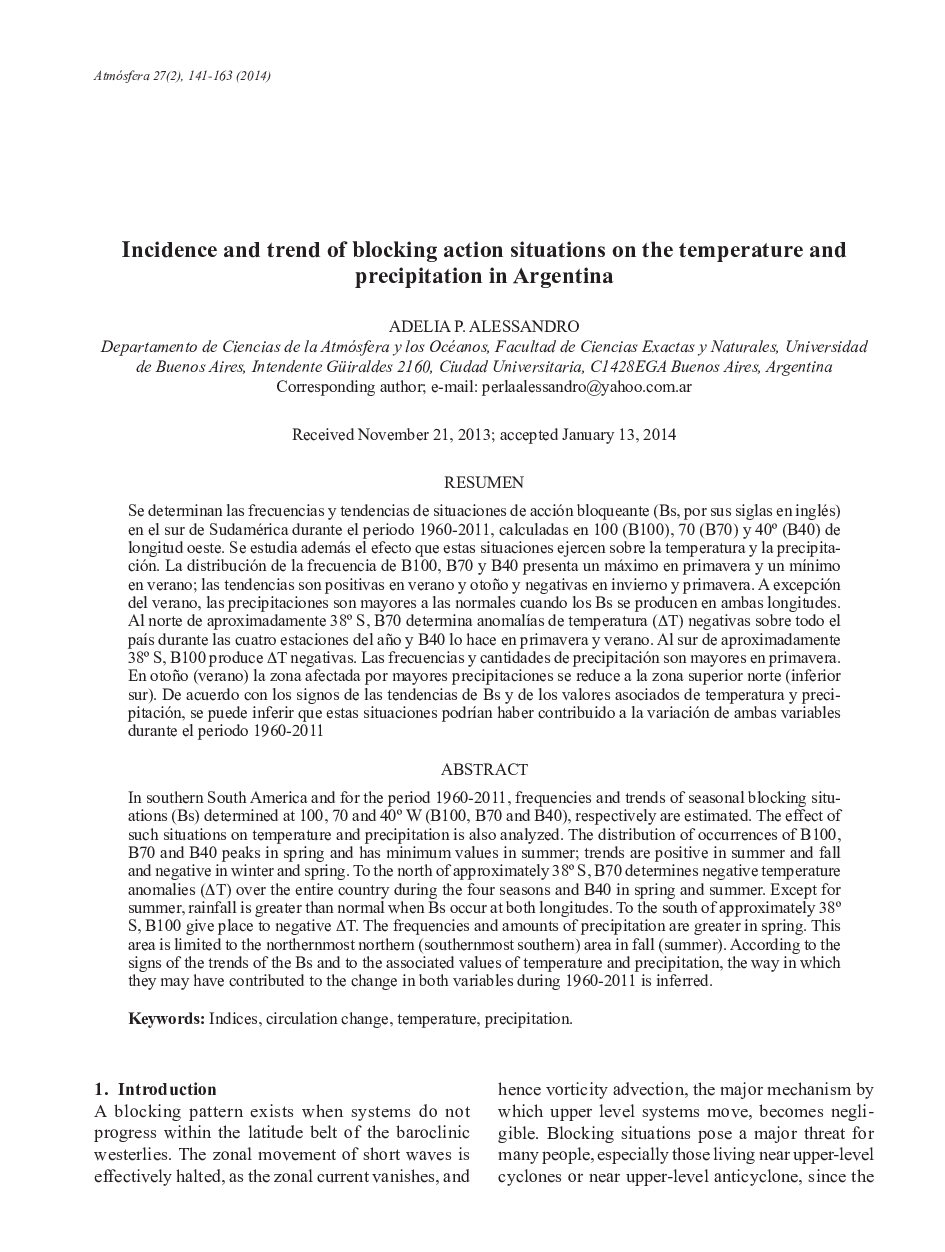| Article ID | Journal | Published Year | Pages | File Type |
|---|---|---|---|---|
| 4461988 | Atmósfera | 2014 | 23 Pages |
ResumenSe determinan las frecuencias y tendencias de situaciones de acción bloqueante (Bs, por sus siglas en inglés) en el sur de Sudamérica durante el periodo 1960-2011, calculadas en 100 (B100), 70 (B70) y 40° (B40) de longitud oeste. Se estudia además el efecto que estas situaciones ejercen sobre la temperatura y la precipitación. La distribución de la frecuencia de B100, B70 y B40 presenta un máximo en primavera y un mínimo en verano; las tendencias son positivas en verano y otoño y negativas en invierno y primavera. A excepción del verano, las precipitaciones son mayores a las normales cuando los Bs se producen en ambas longitudes. Al norte de aproximadamente 38° S, B70 determina anomalías de temperatura (ΔT) negativas sobre todo el país durante las cuatro estaciones del año y B40 lo hace en primavera y verano. Al sur de aproximadamente 38° S, B100 produce ΔT negativas. Las frecuencias y cantidades de precipitación son mayores en primavera. En otoño (verano) la zona afectada por mayores precipitaciones se reduce a la zona superior norte (inferior sur). De acuerdo con los signos de las tendencias de Bs y de los valores asociados de temperatura y precipitación, se puede inferir que estas situaciones podrían haber contribuido a la variación de ambas variables durante el periodo 1960-2011
In southern South America and for the period 1960-2011, frequencies and trends of seasonal blocking situations (Bs) determined at 100, 70 and 40° W (B100, B70 and B40), respectively are estimated. The effect of such situations on temperature and precipitation is also analyzed. The distribution of occurrences of B100, B70 and B40 peaks in spring and has minimum values in summer; trends are positive in summer and fall and negative in winter and spring. To the north of approximately 38° S, B70 determines negative temperature anomalies (ΔT) over the entire country during the four seasons and B40 in spring and summer. Except for summer, rainfall is greater than normal when Bs occur at both longitudes. To the south of approximately 38° S, B100 give place to negative ΔT. The frequencies and amounts of precipitation are greater in spring. This area is limited to the northernmost northern (southernmost southern) area in fall (summer). According to the signs of the trends of the Bs and to the associated values of temperature and precipitation, the way in which they may have contributed to the change in both variables during 1960-2011 is inferred.
